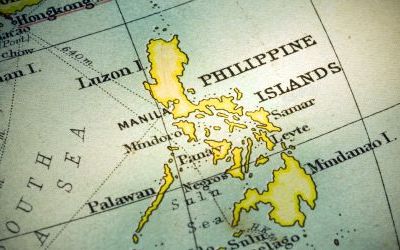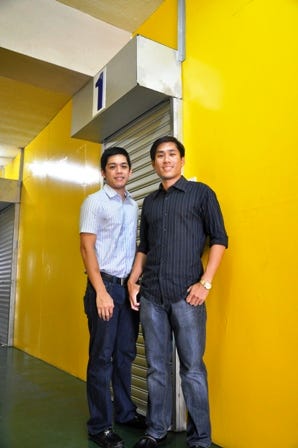The Philippines Gets Its First Self-Storage Facility: Safehouse Storage
Two brothers in the Philippines decided to open a self-storage facilitythe countrys firstafter a company asked if it could store financial documents in a warehouse they owned. Mark and Carlo Coronel, along with their mother Celina Martinez-Coronel, opened Safehouse Storage Facility in 2010. Inside Self-Storage caught up with Carlo to discuss the market in his country, the obstacles the family faced in opening Safehouse, and the unique differences between the U.S. and Philippines self-storage markets.
November 25, 2011

Two brothers in the Philippines decided to open a self-storage facilitythe countrys firstafter a company asked if it could store financial documents in a warehouse they owned. Mark and Carlo Coronel, along with their mother Celina Martinez-Coronel, opened Safehouse Storage Facility in 2010. The family also owns Insular Rural Bank.
Inside Self-Storage caught up with Carlo to discuss the market in his country, the obstacles the family faced in opening Safehouse, and the unique differences between the U.S. and Philippines self-storage markets.
 What led your family to open a self-storage business?
What led your family to open a self-storage business?
The opening of Safehouse came as an accident to us. We really didn't plan to open a self-storage facility in the Philippines. A company approached us and asked if it could store its excess financial documents in one of our warehouses. Since we were already in the warehousing business, my brother and I decided to build a 20-square-meter room in one of our 500-square-meter warehouses.
Not knowing that there was that type of business in the United States, we tried to research more about the self-storage industry on the Internet. We then decided to build three more units and tried to market them. Surprisingly, people were calling us and wanted to take advantage of our services. That is the time when we saw there was a market for this type of business. That was basically the birth of Safehouse.
Whats the status of the industry in your country? Are there many facilities or new developments?
Ours was the first self-storage facility in the Philippines. This industry is not yet known in our country. Most of the storage companies here in the Philippines are companies wherein they pack your items and place them in lift vans and not in individual storage units. There are few self-storage facilities in the Philippines, but we are the first to use roll-up doors for each individual unit.
What are the barriers to entering the industry in your country?
One of the barriers to entering the industry is the location wherein you would place the facility. It is a blessing that we are in the warehousing business, so location is not a problem. For some people, it would be hard for them to pick a strategic location and pay a minimal fee for rent.
Another thing would be the knowledge about this type of business. It is not just simply leasing out storage units, but also making sure the logistics are smooth. In our storage facility, we handle moving items from the customer's place to the storage unit. We make sure the client would not need to worry about how to transport his items to the storage facility.
What are some market differences between the Philippines and the United States?
One main market difference is people in the Philippines rely on service. That's why we can't fully attach the word "self" to our brand. We give the clients a personalized storage solution. It's not just accommodating their storage needs, but also doing the packing, moving and management for them.
In the U.S., you can rent out a truck and the client could use it for hauling his furniture. Here in the Philippines, we can't offer that type of service. People here won't go through the hassle of driving the truck and moving their furniture to the facility. They would pay to make their lives convenient. I wouldn't say that people here are spoiled, but most of our clients are professionals, so they wouldn't have the time to do those things. They would rather seek our services and not worry about it.
Are customers embracing the service, or are you educating them about how it works and what it means for them?
Customers are embracing the service. Every time they inquire, they tell us that it's about time that someone put this kind of business in the Philippines. However, we still need to educate them on how it works. As I mentioned, this is still new in the Philippines; people still don't know how this works. What we need to achieve is awareness. We need to make people aware there is this kind of service here.
Whats the future of the industry in your country and what challenges will it face?
There is such a bright future for this kind of business in the Philippines. More condominiums are being put up near our facility. There is even a resort-type condominium 10 minutes away from the facility designed by no other than Paris Hilton. Fort Global City is a growing business district in Metro Manila. Aside from Makati, which is the central business district in the metro and is just 15 minutes from the facility, Bonifacio Global City (BGC) is even closer. High-rise commercial buildings and condominiums are already cluttering the BGC skyline. With these developments, more people will need extra storage.
One of the challenges our company will face will be competition. The awareness of this kind of business will either bring in more customers or more competition. To prepare us for the latter, we are now going full blast on our expansion by adding more features and services. Were developing a sales team that will bring awareness to the people that theres this kind of business. Were now adding more units and putting up more branches that could also cater to the people living in the northern part of metro Manila.
You May Also Like





